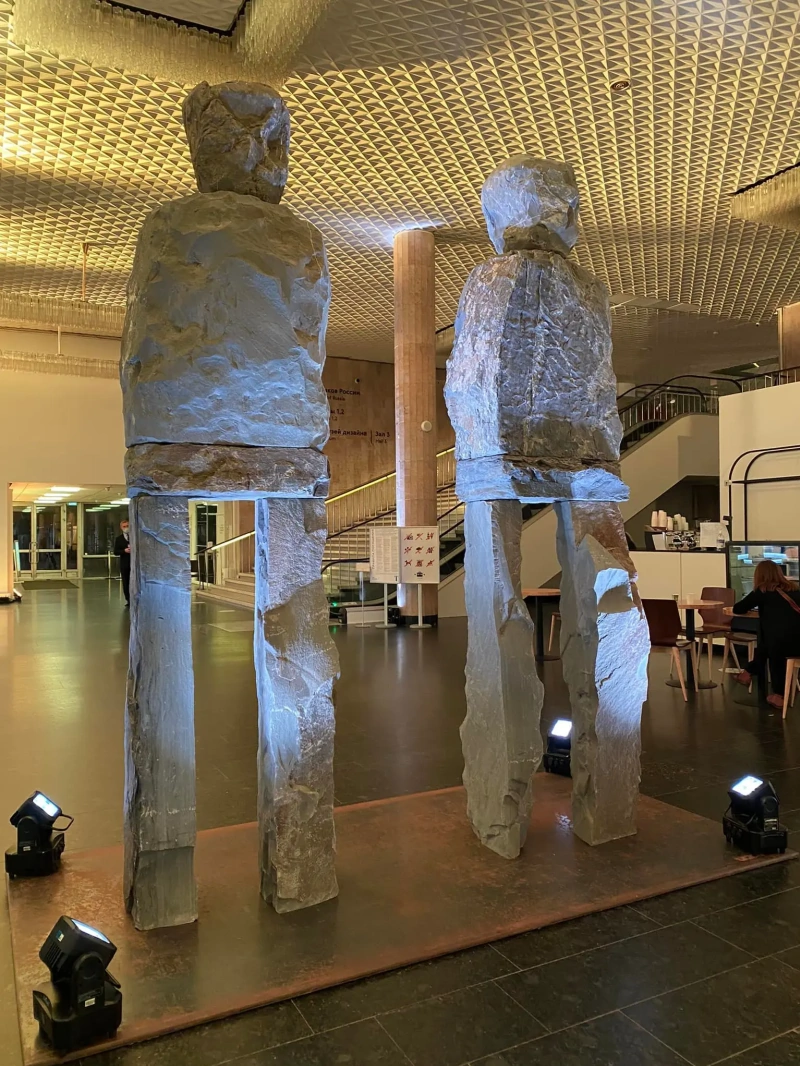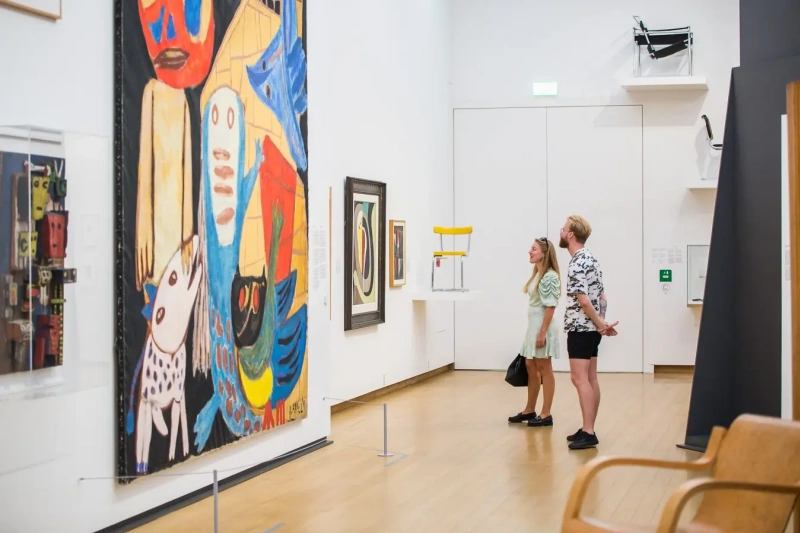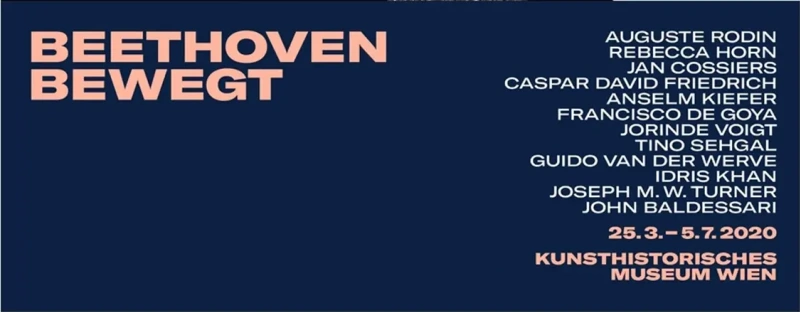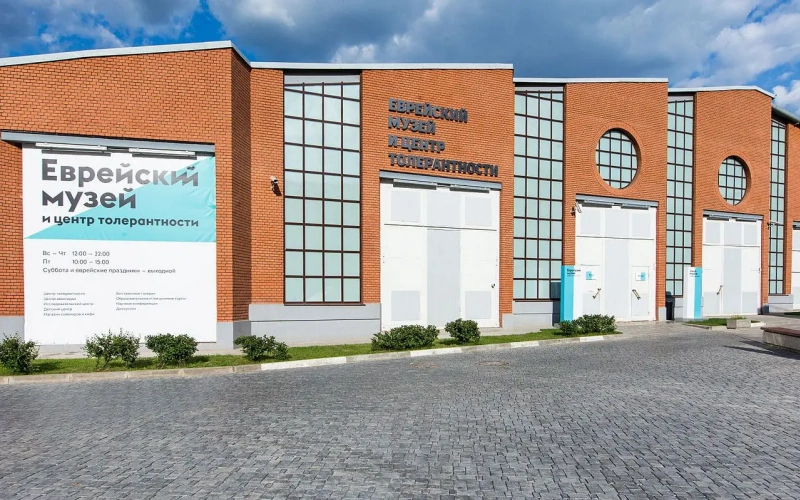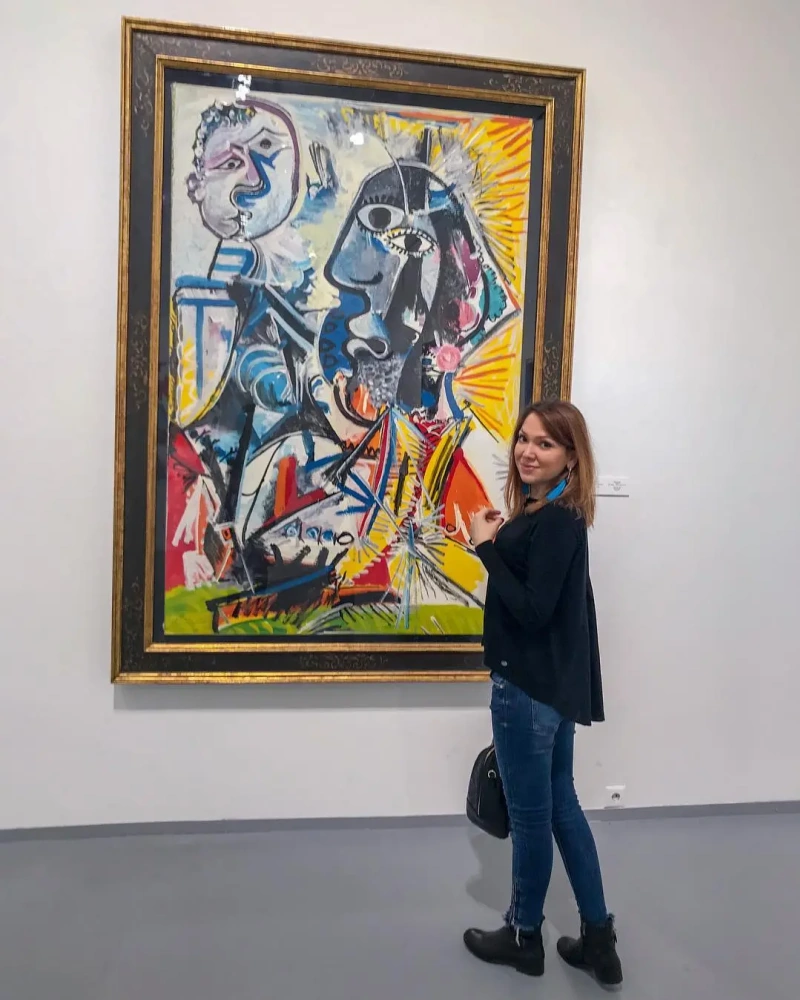log in
Enter site
Login to use Arthive functionality to the maximum
Anselm
Kiefer
Anselm Kiefer (8 March 1945, Donaueschingen, Germany) is a German painter, sculptor, and photographer. The main themes of his work are the German history and mythology, its national identity, as well as the legends of Scandinavia; the humanist Kiefer combines all this with the tragedy of the Holocaust and the murderous vitality of Nazi ideas.
Peculiar features of Anselm Kiefer's art. Kiefer was greatly influenced by his compatriots Joseph Beuys and Georg Baselitz. The artist is known for his large-scale paintings and installations, which trace the tendencies of abstract expressionism from minimalism, abstraction and symbolism to an amazing variety of materials and his own techniques for the implementation of conceived works.
Famous artworks of Anselm Kiefer: Germany's Spiritual Heroes, Varus, Falling stars, Palm Sunday.
Youth: mystic teachers
After the birth of their son, the Kiefers moved from Donaueschingen to the small town of Ottersdorf in search of a safe life. At the age of 20, Anselm graduated from school in Rastatt and in 1965, he entered the University of Freiburg, opting to study law and Romance philology. He studied there for exactly one year, after which he transferred to the Faculty of Arts, where Peter Dreher became his teacher, who was by that time already a well-known artist and illustrator, who led a drawing class at the State Academy of Fine Arts. Later, in Karlsruhe, Anselm studied in the class of Horst Antes, a young but already famous constructivist artist. After the exams in 1969, Kiefer continued his studies under Joseph Beuys. The latter was not only one of the most prominent theorists of postmodernism: Beuys was a great admirer of the clairvoyant and occultist, the founder of anthroposophy and researcher of the Goethe’s works, Rudolf Steiner. In his installations and performances, (Beuys was an active participant in the Fluxus movement), the artist used such unusual materials as honey, ghee and felt.
Kiefer not only adopted Beuys’ love for creating a certain creative atmosphere and fantastic objects that adorned his workshops, but also brought it to a new level. Abandoned and partly destroyed industrial buildings, in a word, ruins become the cradles in which new works by Kiefer were born throughout his entire career.
Is Nazism immortal? Occupations Series
1969 was marked by Occupations photo series, which Kiefer made inspired by the ideas of Beuys. In the photographs, Kiefer was captured doing the Nazi salute against the backdrop of French, Swiss and Italian landscapes. He interpreted his scandalous self-portraits as a controversy between the peaceful present and the Nazi past of his country, and the wide public debate caused by the visualization of the Nazi greeting in Germany, which tried to disown the shameful defeat, were nothing to Kiefer. Later, the artist turned his eight photographs of the Occupations series into a series of paintings Heroic Symbols. According to the London art critic Norman Rosenthal, in his art, Kiefer “in a grandiose way unites all that terrible and beautiful that is in his country”.
German period: Hornbach
While Joseph Beuys was creating his student political force with the main requirement of self-government and free admission to the Academy of Düsseldorf for all comers, Kiefer headed on along his creative path and moved to the city of Hornbach. There he got himself a former brick factory, which he turned into a studio, where he worked for twenty years. In 1971, the German period began in the work of Kiefer, his passion for the The Ring of the Nibelungen, the opera cycle by Richard Wagner. Around the same time, inscriptions appeared on his paintings — the names of people, names of historical places or events, which remain one of the artist’s “signature” techniques to this day. These are coded signals, personal Kiefer tablets, with which the artist seeks to connect the past and the present.
Sweeping away all the old, including the memories of “degenerate art”, a new wave of fashion for expressionism, for the impulsive self-expression of artists, is emerging in reviving Europe. Against this background, a new trend is formed, the New Wild (Neue Wilde), which united Georg Baselitz, Anselm Kiefer, Gerhard Richter, Sigmar Polke. These German artists, whose artworks are very expensive today, were supported by their Italian colleagues Francesco Clemente, Enzo Cucchi and many others. Cucchi and many others. The first iconic major New Wilds exhibition was the New Spirit in Painting in 1981 in London, where participants exhibited their work alongside the works of Pablo Picasso, Andy Warhol and David Hockney. This period includes one of the most scandalous Kiefer’s works called Interior(1981) (Innenraum — 1981). He portrayed Hitler’s office after the fire. The theme of the Holocaust is revealed in the Margarete(1981) painting, an allegorical depiction of a German woman with braids in flames — the picture was painted under the impression of Paul Celan’s poem Death Fugue (Todesfuge — 1947).
Black milk of dawn we drink you at night
we drink you at noon death is a master from Deutschland
we drink you evenings and mornings we drink and drink
death is a master from Deutschland his eye is blue
he strikes you with lead bullets his aim is true
a man lives in the house your golden hair Margarete
he sets his dogs on us he gifts us a grave in the air
he plays with the snakes and dreams death is a master from Deutschland
your golden hair Margarete
your ashen hair Shulamit
His another painting Shulamith(1983) or Sulamith (1983) is a symbol of a Jewish woman whose hair has turned to ash. “Art is difficult. It’s not fun,” says Kiefer.
The lead weight of history: new material in Kiefer’s work
Continuing his search for new materials for sculptural work, in 1985 the artist acquired lead sheets from the roof of Cologne Cathedral — in fact, historical relics that covered the magnificent church, which had been built for several centuries. In his works, Kiefer turned these sheets into book pages — a truly alchemical transformation of lead into the gold of modern art. The artist himself believes that “this material is the only one heavy enough to withstand the weight of human history”. One of the most famous compositions preserving the spirit of the Cologne Cathedral High Priestess / Mesopotamia (1985—1989). The two shelves, marked as Tigris and Euphrates, on which about two hundred books of lead are placed — the tablets sealed in the eternity of heavy metal make a painful and at the same time solid impression. But there is also a hope in the sculpture, that the knowledge accumulated by mankind will not let it dissolve in the crucible of wars and passions.
After 1985, Anselm Kiefer returned to criticism of Nazism, a kind of analysis of the role of Germany in the general context of the earthly civilization development. “My biography is the biography of Germany,” says Kiefer. The themes that the artist worked on originate in occult movements and mystical practices that the Nazis loved to exploit. But it depends on the point of view. Now and then, the tragedy of the Holocaust appears in Kiefer’s works with notes of pain and tragedy.
Leaving his family and travel time. Barjac
Leaving his studio in Hornbach in 1991, as well as his wife and children, Kiefer left Germany. He had freedom and exotic countries before him: the artist travelled across India, Mexico, visited Japan. Saturated with impressions, he returned to Europe and decided to “drop his anchor” in France. Here, in the commune Barjac, he found an abandoned silk factory, which became his new creative residence.
Kiefer’s works always feature unshakable readiness to confront the dark past of the culture of his homeland, its unrealized potential. Sculptures, paintings, installations are often performed on a large, confrontational scale, which is also a means of expressing the artist’s feelings and thoughts. Among such monumental art objects is the famous Seven heavenly palaces, which was created for the opening of the Hangar Bicocca gallery on the outskirts of Milan, owned by the world famous company Pirelli. The structures are made of reinforced concrete and shipping containers that resemble old garages. These palace ruins bear names from the Hebrew book of Palaces (Sefer Hekhalot). The weight of each “ruin” is about 90 tons, and the height is 14 to 18 meters.
His pictorial series dedicated to poets are no less monumental. Their heroes are Paul Celan, a German surrealist poet, author of the famous Death Fugue poem about the fate of Polish concentration camp prisoners, and Velimir Khlebnikov, the father of Russian futurism, inventor of the “zaum”, the language of the future. One of the main themes of the series of works dedicated to Khlebnikov is the poet’s theory that destructive naval battles affect the course of history once every 317 years. Kiefer interpreted this futuristic find of Khlebnikov on huge canvases: his submarines and ships seem to have just left the battle, bearing the traces of enemy hits. Rust and palimpsest technique, dull, but saturated colours of the paintings are complemented by mud and clay — another “signature” technique of the artist.
New studios: an abandoned department store and a former nuclear power plant
Anselm Kiefer hired 110 lorries to transport his studio from Barjac to the suburbs of Paris. In 2008, another industrial building became his new creative space, the former La Samaritaine department store on the Boulevard Périphérique. Lead has become the forbidden fruit for local residents who were hunting for non-ferrous metals: in 2008, just before the move, 7.5 tons of lead were stolen from the studio in Barjac, which was soon found at a local scrap metal collection point. And in 2016, unidentified people stole a sculpture similar to the already mentioned High Priestess/Zweistromland from the studio yard in Croissy-Beaubourg: 10 tons of lead and 12 tons of marble vanished into the thin night air.
In 2011, Kiefer owned another abandoned territory: this time he liked the former nuclear power plant Mülheim-Kerlich in western Germany, on the territory of which he placed not only a studio, but also art objects. The artist was very persistent in his desire to acquire the NPP complex, and after numerous letters and appeals, the head of the RWE electric power company, Jürgen Grossmann, was forced to give up.
Happy marriage
Anselm Kiefer’s second marriage turned out to be successful: his life partner was the Austrian Renata Graf, a famous photographer who shared her husband’s reverent attitude to the ruins and liked capturing deserted places, from which loneliness emanated. Renata also liked to sign her works right on top of the image: it made a composition out of a photograph. The family lived in Paris with their two children, and to create new works, Kiefer chose one of two studios — in the suburbs of the French capital, or in Germany. After all, studios are not only the birthplace of new masterpieces, but also a good investment in real estate.
Anselm Kiefer at the Louvre and on screens
Anselm became the only one of our contemporaries whose works are included in the permanent collection of the Louvre during the artist’s lifetime, in 2007. Kiefer creates and inspires others: in 2014 the feature film Noah by Darren Aronofsky was released; the visual solutions in the film were created under the impression from the works of Anselm Kiefer. And the fate of the protagonist – Nov – resonates with the core creative topics Kiefer: according to Aronofsky, Noah is a "dark, complicated character" who after the flood are faced with a sense of "survivor's guilt".
Written by Rita Lozinskaya
Read more
Peculiar features of Anselm Kiefer's art. Kiefer was greatly influenced by his compatriots Joseph Beuys and Georg Baselitz. The artist is known for his large-scale paintings and installations, which trace the tendencies of abstract expressionism from minimalism, abstraction and symbolism to an amazing variety of materials and his own techniques for the implementation of conceived works.
Famous artworks of Anselm Kiefer: Germany's Spiritual Heroes, Varus, Falling stars, Palm Sunday.
Ashes of World War II: Birth
In the early spring of 1945, in the last months of World War II, Anselm Kiefer was born in defeated Nazi Germany. On the very day of his birth, on 8th of March, the family’s house was destroyed, but everyone survived, because they were in the hospital. The boy from the family of a painting teacher saved himself and his loved ones by the very fact of his birth. The desert landscape of a war-torn country, stones of ruins and broken glass, dry plants and straw, rusty structures and dead trees were deeply imprinted in Kiefer’s mind for life and became the materials of his first sculptures. Rebirth from oblivion, the use of parts of the old in the construction of the new, the beauty hidden inside the decay products — that was what German children grew up among in the country that lost the war. Those were the themes that became central to Kiefer’s works. And after many years, Kiefer remarked: “For some, ruins are the end, but if there are ruins, you can always start over”.Youth: mystic teachers
After the birth of their son, the Kiefers moved from Donaueschingen to the small town of Ottersdorf in search of a safe life. At the age of 20, Anselm graduated from school in Rastatt and in 1965, he entered the University of Freiburg, opting to study law and Romance philology. He studied there for exactly one year, after which he transferred to the Faculty of Arts, where Peter Dreher became his teacher, who was by that time already a well-known artist and illustrator, who led a drawing class at the State Academy of Fine Arts. Later, in Karlsruhe, Anselm studied in the class of Horst Antes, a young but already famous constructivist artist. After the exams in 1969, Kiefer continued his studies under Joseph Beuys. The latter was not only one of the most prominent theorists of postmodernism: Beuys was a great admirer of the clairvoyant and occultist, the founder of anthroposophy and researcher of the Goethe’s works, Rudolf Steiner. In his installations and performances, (Beuys was an active participant in the Fluxus movement), the artist used such unusual materials as honey, ghee and felt.
Kiefer not only adopted Beuys’ love for creating a certain creative atmosphere and fantastic objects that adorned his workshops, but also brought it to a new level. Abandoned and partly destroyed industrial buildings, in a word, ruins become the cradles in which new works by Kiefer were born throughout his entire career.
Is Nazism immortal? Occupations Series
1969 was marked by Occupations photo series, which Kiefer made inspired by the ideas of Beuys. In the photographs, Kiefer was captured doing the Nazi salute against the backdrop of French, Swiss and Italian landscapes. He interpreted his scandalous self-portraits as a controversy between the peaceful present and the Nazi past of his country, and the wide public debate caused by the visualization of the Nazi greeting in Germany, which tried to disown the shameful defeat, were nothing to Kiefer. Later, the artist turned his eight photographs of the Occupations series into a series of paintings Heroic Symbols. According to the London art critic Norman Rosenthal, in his art, Kiefer “in a grandiose way unites all that terrible and beautiful that is in his country”.
German period: Hornbach
While Joseph Beuys was creating his student political force with the main requirement of self-government and free admission to the Academy of Düsseldorf for all comers, Kiefer headed on along his creative path and moved to the city of Hornbach. There he got himself a former brick factory, which he turned into a studio, where he worked for twenty years. In 1971, the German period began in the work of Kiefer, his passion for the The Ring of the Nibelungen, the opera cycle by Richard Wagner. Around the same time, inscriptions appeared on his paintings — the names of people, names of historical places or events, which remain one of the artist’s “signature” techniques to this day. These are coded signals, personal Kiefer tablets, with which the artist seeks to connect the past and the present.
Sweeping away all the old, including the memories of “degenerate art”, a new wave of fashion for expressionism, for the impulsive self-expression of artists, is emerging in reviving Europe. Against this background, a new trend is formed, the New Wild (Neue Wilde), which united Georg Baselitz, Anselm Kiefer, Gerhard Richter, Sigmar Polke. These German artists, whose artworks are very expensive today, were supported by their Italian colleagues Francesco Clemente, Enzo Cucchi and many others. Cucchi and many others. The first iconic major New Wilds exhibition was the New Spirit in Painting in 1981 in London, where participants exhibited their work alongside the works of Pablo Picasso, Andy Warhol and David Hockney. This period includes one of the most scandalous Kiefer’s works called Interior(1981) (Innenraum — 1981). He portrayed Hitler’s office after the fire. The theme of the Holocaust is revealed in the Margarete(1981) painting, an allegorical depiction of a German woman with braids in flames — the picture was painted under the impression of Paul Celan’s poem Death Fugue (Todesfuge — 1947).
Black milk of dawn we drink you at night
we drink you at noon death is a master from Deutschland
we drink you evenings and mornings we drink and drink
death is a master from Deutschland his eye is blue
he strikes you with lead bullets his aim is true
a man lives in the house your golden hair Margarete
he sets his dogs on us he gifts us a grave in the air
he plays with the snakes and dreams death is a master from Deutschland
your golden hair Margarete
your ashen hair Shulamit
His another painting Shulamith(1983) or Sulamith (1983) is a symbol of a Jewish woman whose hair has turned to ash. “Art is difficult. It’s not fun,” says Kiefer.
The lead weight of history: new material in Kiefer’s work
Continuing his search for new materials for sculptural work, in 1985 the artist acquired lead sheets from the roof of Cologne Cathedral — in fact, historical relics that covered the magnificent church, which had been built for several centuries. In his works, Kiefer turned these sheets into book pages — a truly alchemical transformation of lead into the gold of modern art. The artist himself believes that “this material is the only one heavy enough to withstand the weight of human history”. One of the most famous compositions preserving the spirit of the Cologne Cathedral High Priestess / Mesopotamia (1985—1989). The two shelves, marked as Tigris and Euphrates, on which about two hundred books of lead are placed — the tablets sealed in the eternity of heavy metal make a painful and at the same time solid impression. But there is also a hope in the sculpture, that the knowledge accumulated by mankind will not let it dissolve in the crucible of wars and passions.
After 1985, Anselm Kiefer returned to criticism of Nazism, a kind of analysis of the role of Germany in the general context of the earthly civilization development. “My biography is the biography of Germany,” says Kiefer. The themes that the artist worked on originate in occult movements and mystical practices that the Nazis loved to exploit. But it depends on the point of view. Now and then, the tragedy of the Holocaust appears in Kiefer’s works with notes of pain and tragedy.
Leaving his family and travel time. Barjac
Leaving his studio in Hornbach in 1991, as well as his wife and children, Kiefer left Germany. He had freedom and exotic countries before him: the artist travelled across India, Mexico, visited Japan. Saturated with impressions, he returned to Europe and decided to “drop his anchor” in France. Here, in the commune Barjac, he found an abandoned silk factory, which became his new creative residence.
Kiefer’s works always feature unshakable readiness to confront the dark past of the culture of his homeland, its unrealized potential. Sculptures, paintings, installations are often performed on a large, confrontational scale, which is also a means of expressing the artist’s feelings and thoughts. Among such monumental art objects is the famous Seven heavenly palaces, which was created for the opening of the Hangar Bicocca gallery on the outskirts of Milan, owned by the world famous company Pirelli. The structures are made of reinforced concrete and shipping containers that resemble old garages. These palace ruins bear names from the Hebrew book of Palaces (Sefer Hekhalot). The weight of each “ruin” is about 90 tons, and the height is 14 to 18 meters.
His pictorial series dedicated to poets are no less monumental. Their heroes are Paul Celan, a German surrealist poet, author of the famous Death Fugue poem about the fate of Polish concentration camp prisoners, and Velimir Khlebnikov, the father of Russian futurism, inventor of the “zaum”, the language of the future. One of the main themes of the series of works dedicated to Khlebnikov is the poet’s theory that destructive naval battles affect the course of history once every 317 years. Kiefer interpreted this futuristic find of Khlebnikov on huge canvases: his submarines and ships seem to have just left the battle, bearing the traces of enemy hits. Rust and palimpsest technique, dull, but saturated colours of the paintings are complemented by mud and clay — another “signature” technique of the artist.
New studios: an abandoned department store and a former nuclear power plant
Anselm Kiefer hired 110 lorries to transport his studio from Barjac to the suburbs of Paris. In 2008, another industrial building became his new creative space, the former La Samaritaine department store on the Boulevard Périphérique. Lead has become the forbidden fruit for local residents who were hunting for non-ferrous metals: in 2008, just before the move, 7.5 tons of lead were stolen from the studio in Barjac, which was soon found at a local scrap metal collection point. And in 2016, unidentified people stole a sculpture similar to the already mentioned High Priestess/Zweistromland from the studio yard in Croissy-Beaubourg: 10 tons of lead and 12 tons of marble vanished into the thin night air.
In 2011, Kiefer owned another abandoned territory: this time he liked the former nuclear power plant Mülheim-Kerlich in western Germany, on the territory of which he placed not only a studio, but also art objects. The artist was very persistent in his desire to acquire the NPP complex, and after numerous letters and appeals, the head of the RWE electric power company, Jürgen Grossmann, was forced to give up.
Happy marriage
Anselm Kiefer’s second marriage turned out to be successful: his life partner was the Austrian Renata Graf, a famous photographer who shared her husband’s reverent attitude to the ruins and liked capturing deserted places, from which loneliness emanated. Renata also liked to sign her works right on top of the image: it made a composition out of a photograph. The family lived in Paris with their two children, and to create new works, Kiefer chose one of two studios — in the suburbs of the French capital, or in Germany. After all, studios are not only the birthplace of new masterpieces, but also a good investment in real estate.
Anselm Kiefer at the Louvre and on screens
Anselm became the only one of our contemporaries whose works are included in the permanent collection of the Louvre during the artist’s lifetime, in 2007. Kiefer creates and inspires others: in 2014 the feature film Noah by Darren Aronofsky was released; the visual solutions in the film were created under the impression from the works of Anselm Kiefer. And the fate of the protagonist – Nov – resonates with the core creative topics Kiefer: according to Aronofsky, Noah is a "dark, complicated character" who after the flood are faced with a sense of "survivor's guilt".
Written by Rita Lozinskaya
-
Artworks liked by63 users
- Artworks in 4 collections and 33 selections
Publication
Exhibitions
All exhibitions of the artist
Shooting stars
1995

Shulamith
1983, 368×54.1 cm

Margarita
1981

Interior
1981

High Priestess / Mesopotamia
1980-th
, 370×780 cm

Varus
1976, 200×270 cm

The heroes of the German spirit
1973, 306.1×680.1 cm

Heroic Symbol VII
1970, 119×158.5 cm
Feed
Diversity. Unity. Modern Art of Europe. Berlin. Moscow. Parisexhibition finished

November 23, 2021 − March 13, 2022 State Tretyakov gallery, Krymsky Val, 10. New Tretyakovka, Moscow
Diversity. Unity. Modern Art of Europe. Berlin. Moscow. Parisexhibition added

November 23, 2021 − March 13, 2022 State Tretyakov gallery, Krymsky Val, 10. New Tretyakovka, Moscow



